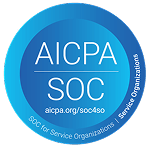FAQs
 How does currency conversion impact the value of student loans for Pakistani students?
How does currency conversion impact the value of student loans for Pakistani students?
Student loans are typically disbursed in US dollars, but when budgeting, Pakistani students should account for the PKR-USD exchange rate fluctuations that might affect their purchasing power. A US$20,000 (PKR 5,726,000) loan disbursement can change in value if the Pakistani rupee depreciates, which has been trending historically. Consider setting aside a portion of your loan funds as a buffer against currency fluctuations, especially if you plan to use some funds for expenses in Pakistan during breaks or for family emergencies.
 What specific expenses should Pakistani students prioritize when budgeting their loan funds?
What specific expenses should Pakistani students prioritize when budgeting their loan funds?
Pakistani students should prioritize essential academic expenses like tuition and required course materials before allocating funds to housing and living expenses. Many successful Pakistani students maintain a separate emergency fund of US$1,000-US$2,000 (PKR 286,300-572,600) for unexpected expenses or travel emergencies. Focus on establishing a credit history early by paying for essential items while avoiding luxury purchases that aren’t necessary for your education, as building good credit will benefit your long-term financial options in the U.S.
 Can Pakistani students use loan funds to pay for standardized tests or visa renewal fees?
Can Pakistani students use loan funds to pay for standardized tests or visa renewal fees?
Most student loans can cover education-related expenses including TOEFL, GRE or GMAT test fees if taken during your enrollment period, though tests taken before enrolment usually cannot be reimbursed retroactively. Visa renewal fees and SEVIS fees are typically considered legitimate educational expenses that can be covered with loan funds. Keep detailed records of all immigration-related expenses for both your loan provider and potential tax documentation, as some education-related expenses may qualify for tax benefits.
 How can Pakistani students stretch their loan funds further while studying in the U.S.?
How can Pakistani students stretch their loan funds further while studying in the U.S.?
Pakistani students can maximize their loan funds by taking advantage of campus meal plans, which are often cheaper than eating out, using university facilities like gyms and libraries rather than paying for external memberships, and purchasing used textbooks or digital versions. Many universities offer free or discounted software licenses for students, eliminating the need to purchase expensive programs. If your status allows, consider working part time on campus (up to 20 hours weekly on F-1 visas) to supplement your loan and reduce the total amount you need to borrow.
 What financial planning should Pakistani students do before accepting a student loan?
What financial planning should Pakistani students do before accepting a student loan?
Before accepting a student loan, Pakistani students should create a comprehensive budget accounting for all expected expenses in U.S. dollars and how they compare to costs in Pakistan (for example, housing in cities like New York or San Francisco can cost five to 10 times more than in Karachi or Lahore). Research the cost of living in your specific university location, as it varies dramatically across the U.S. Develop a loan repayment strategy based on realistic postgraduation salary expectations in either the U.S. or Pakistan, considering the significant income differences between the two countries and how that will affect your ability to repay.
